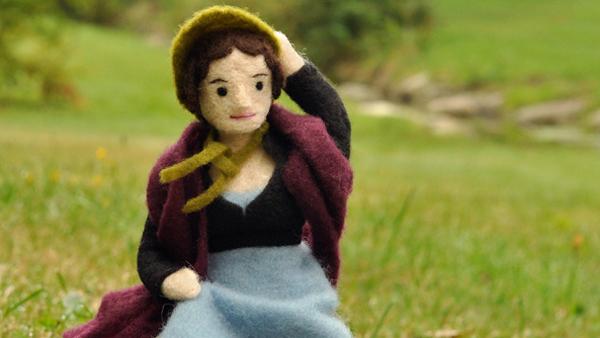Woolen, felt figures dressed in 19th-century coattail jackets and trousers set the scene for a condensed version of the classic novel, “Pride and Prejudice.” Jack Wang, associate professor and chair of the department of writing, is being recognized in the Illustrator’s Exhibition in the Bologna Children’s Book Fair in Bologna, Italy, along with his brother, Holman Wang, for their innovative form of illustration featured in their series of “Cozy Classics.” The series of cardboard books is composed of classic works of literature boiled down to one word per page and needle-felt illustrations, for which they are being recognized. The book fair will take place Mar. 25-28.
Staff Writer Emma Rizzo spoke with Wang about his illustrations, his reaction to his recognition and children’s illustration as an art form.
Emma Rizzo: Would you like to tell a little bit about your background?
Jack Wang: My background is in writing, and I have a Ph.D. in English with an emphasis on creative writing. That explains my interest in the classics. I also happen to have two daughters. When my oldest child was born, we were reading a lot of board books to her and realized that a lot of them were the same. So we saw an opportunity to combine some of my literary interests with some of her literary interests.
ER: Can you describe the process of needle felting?
JW: It’s really a technique that’s relatively new. The idea is that you take loose wool, it’s called roving, and compact this roving by basically stabbing it repeatedly with a needle or with multiple needles using a tool. These needles have serrated edges and entangle the fibers until the wool gets more and more dense to the point where it is something that can be sculpted. That’s the basis for all the figures.
ER: How did you get into this particular type of illustration?
JW: When I came up with the idea of abridging classics for babies or toddlers, I ran it by my brother, and he knows people who do needle felting. What we were looking for was sort of a fresh way to illustrate what we thought was a good concept, and most of the illustrations out there are two-dimensional. We wanted to work in a fresh idiom. [This method] would be something really new in the world of children’s illustration.
ER: You are being recognized for your illustrations. Would you be able to talk a little bit about that?
JW: My brother found out about this contest that’s connected to the Bologna Children’s Book Fair, and they ask you to send five images that are related to some kind of theme. What we decided to do was send five images from “Pride and Prejudice.” Lo and behold, we were selected for this very prestigious exhibition.
ER: Will you be traveling to the exhibition to view your work?
JW: We will be there at the end of March, and we are going to participate in the exhibit. There are some other prizes that are awarded at the fair, but we’re just thrilled to be a part of the exhibit. We will have our work reproduced in the book fair annual. They only selected 87 illustrators or teams of illustrators out of over 3,000 entries, and there were only four entries selected from North America. We were one of only four, so it’s definitely a real honor.
ER: What was your reaction when you found out you were selected?
JW: I was really excited. It’s one of those things where you apply but then you don’t think about it, so it was a very nice surprise. It was thrilling to think that we were among such a select group.
ER: You are specifically being recognized for your work in the Cozy Classic, “Pride and Prejudice.” Do you have a particular connection with the novel?
JW: I, like many people, like Jane Austen. I think that these books are about appealing to lovers of the classics and thinking about not only what we like as readers but what we think our audience is going to respond to. I have to say that fans of Jane Austen have responded very positively.
ER: What does this recognition mean to you?
JW: I think it helps recognize that children’s illustration is an important form of art. I think it’s easy to think of both children’s books and children’s illustrations as somehow less important than works of writing or works of art because they’re for children. I think this selection to this exhibition underscores that there are a lot of fine practitioners out there of children’s writing and children’s illustration, and that there is a real art to it.





